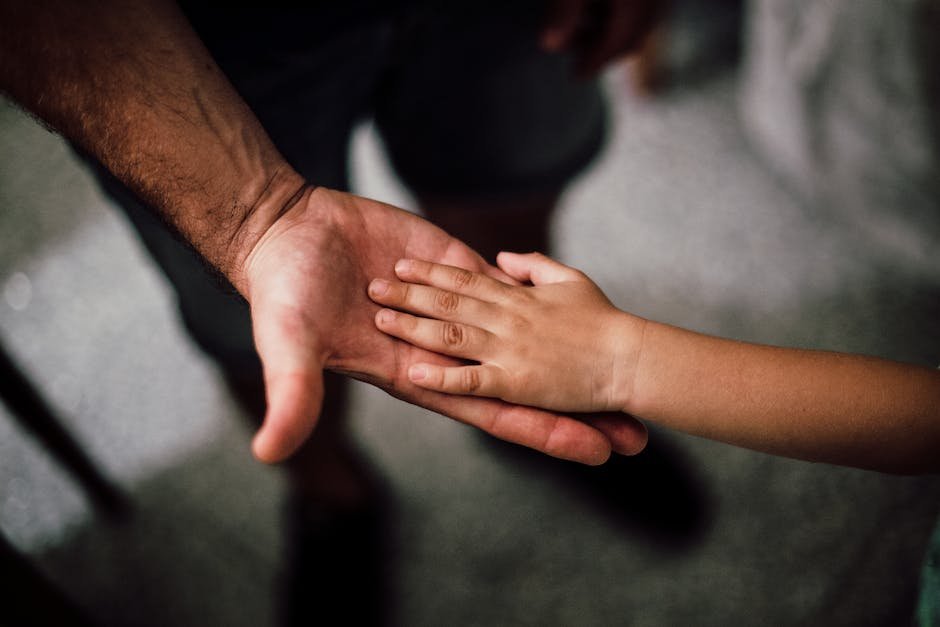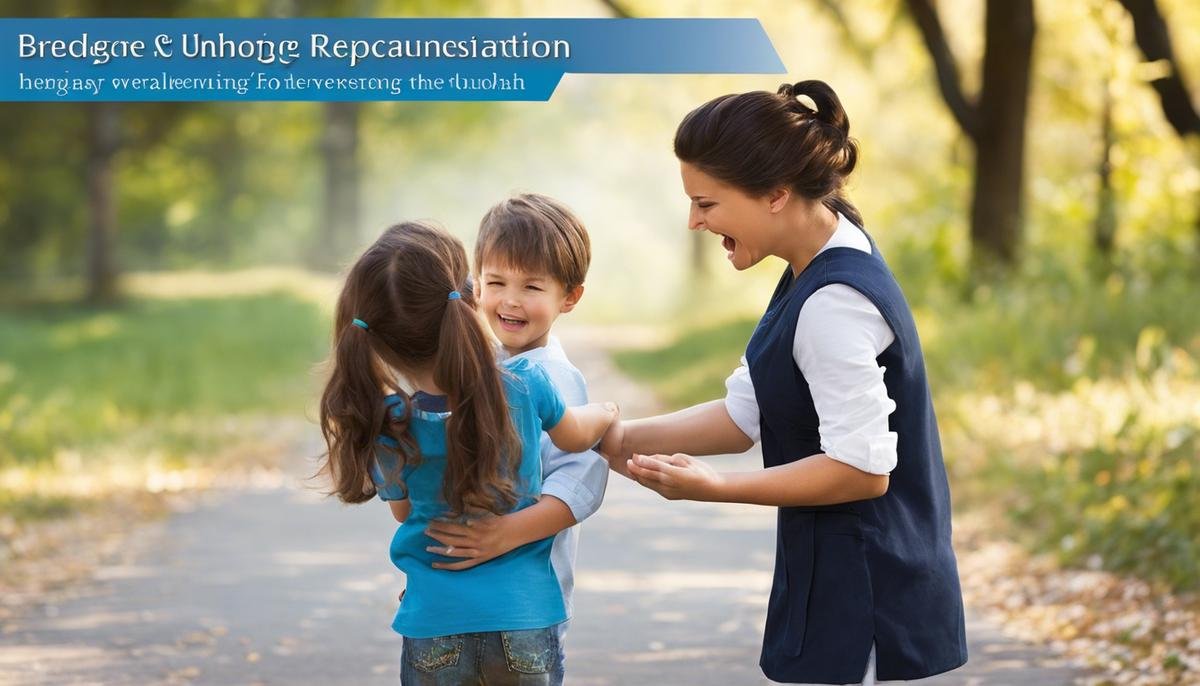
The mystery of autism is slowly unfurling as we delve deeper into understanding its unique challenges and conditions. Among the myriad of issues encountered by children with autism, aggressive behavior stands out due to its high incidence rate and the management difficulties that it presents. Wading through this complexity necessitates comprehending the triggers that stimulate such actions, the communication strategies usable to mitigate them, and the immediate as well as long-term methods to effectively manage these aggressive episodes. Through this discourse, we aspire to demystify the arcana of aggressive behaviors in children with autism to enable parents, caregivers, and professionals to constructively engage and promote their overall development.
Identifying The Triggers
Understanding the Triggers Behind Aggressive Behavior in Children with Autism
Life, they say, is a perpetual learning curve. It presents us, parents, with an incredible opportunity to unlock mysteries and understand the subtle nuances that define our unique, beautiful children. One such noble endeavor is understanding and addressing aggressive behavior in children with Autism.
Aggression in children with Autism is far from being sheer wilfulness. It’s their way of expressing frustration, fear, anxiety, or just an inability to convey their feelings. Understanding the triggers, hence, is the key to managing and perhaps, helping, alleviate aggressive behaviors.
First off, it’s crucial to understand what constitutes aggressive behavior. They can be self-injurious, such as head-banging, or directed towards others, like hitting, or damaging property. Recognizing these skills is the first step to unraveling the triggers.
Let’s delve deeper into some typical triggers.
- Sensory Overload: Sensory issues are common in autistic children and a sudden onset of sounds, lights, crowds, or textures can send their nervous system into an overload. This can prompt an aggressive outbreak as a coping mechanism.
- Communication Difficulties: Autism often brings with it language development delays or difficulties. When unable to express their needs or feelings verbally, a child might resort to physical expressions of their frustrations.
- Changes in Routine: Children with Autism thrive on predictability and routine. Sudden unexpected changes can spark off anxiety and aggression. It’s wise, therefore, to introduce changes gradually and with ample warning.
- Medical Issues: Discomfort or pain, fatigue, hunger, can undeniably prompt aggressive behavior. Autism sometimes creates a barrier for a child to express these physical discomforts in a comprehensible way.
- Inability to Understand Social Cues: Children on the spectrum may not fully comprehend social norms or cues. This misinterpretation can lead to misunderstandings and consequent aggression.
Recognizing these triggers is invaluable, but what’s more important is to take action – to seek strategies that help in managing these aggressive bouts and alleviating the child’s underlying sources of distress.
In the face of sensory sensitivities, create a quiet, calm space that the child can retreat to when overstimulated. Treating any underlying medical conditions is also critical. An occupational therapist or speech-language pathologist could aid in building coping strategies and communication skills.
Change, while necessary at times, should be introduced gently, providing ample processing time. Social stories, visual aids, and rehearsing experiences can help prepare your child for new social situations.
On a final note, remember every child, autistic or not, is different, and these triggers may not be the same for all. They deserve all your patience, time, love, and energy. It’s not always as easy as it sounds, no one said parenting was, but the effort made makes room for increased understanding and enhanced parent-child relationships. And it’s not just about managing aggression, but it’s also about empathizing with your child and giving them the space to grow uniquely and beautifully.

Effectively Handling Aggressive Episodes
Addressing Aggressive Episodes Among Kids: Effective Strategies for Parents
Tantrums and aggressive episodes are part of the numerous challenges parents may face when raising children. While these episodes may be distressing for both the parent and child, implementing some robust, strategic responses and tactics can significantly help manage the situation and mitigate the emotions leading to such behavior. Amongst these strategies, introducing play therapy, setting boundaries, and exploring positive discipline techniques are just a few facets worth considering.
Play Therapy
As unconventional as it may sound, play therapy is one ingenious technique for addressing aggressive tendencies among children. Experts in child psychology emphasize that play is children’s universal language. It allows them to express their thoughts and emotions, often too complex to verbalize, in a non-threatening environment.
Parents are encouraged to engage their kids in pretend play, construction play, and even board games. These activities can reveal a lot about their feelings and anxieties. Over time, play therapy can help children develop better self-control and self-regulation skills, reducing aggressive episodes.
Setting Clear Boundaries
Building a safer environment for children isn’t just about creating physical safe spaces, it’s also about setting clear boundaries. These often invisible lines teach children about respect and consent, contributing to healthier interactions.
Setting limits and providing consistent consequences helps children understand the impact of their actions and gradually diminish their aggressive behavior. It’s important parents calmly and simply explain these boundaries to the child and stick to them diligently.
Exploring Positive Discipline Techniques
Traditional punitive discipline methods often induce fear rather than discipline. Utilizing positive discipline techniques, however, reframes discipline as a teaching tool rather than a form of punishment.
Positive discipline empowers children to make better choices and fosters mutual respect. Methods may involve problem-solving, redirection, and setting up natural consequences for certain behaviors. As parents, it’s crucial to emphasize that it’s the behavior, not the child, which is unacceptable. Let them know they’re loved and cherished, but some behaviors are not acceptable.
As distressing as aggressive episodes can be, it’s vital to understand these are just stages in a child’s emotional development and they’re seeking assistance in handling their emotions. Responding with patience and leveraging effective strategies can transform these challenging times into opportunities for growing stronger relationships within the family.
A bit of love, a dash of empathy, and a good measure of patience can work wonders in fostering a loving, respectful, and reciprocal parent-child relationship. It’s a collective journey of growth, one which is full of challenges, but every bit as rewarding.

Photo by itfeelslikefilm on Unsplash
Effective Communication Strategies
Nurturing Parent-Child Relationships: Techniques to Curb Aggressive Behavior
As parents, it’s foundational to help our children navigate their emotions, especially their more aggressive tendencies. Yet, as many of us might have experienced, this can be exceedingly challenging. But don’t fret! The journey of parenting is full of learning curves, and with the right communication strategies, it becomes easier for us to guide our little ones towards healthier interactions.
Play therapy is a strategy parents can explore to address a child’s violent tendencies. This approach involves utilizing toys and games as mediums to help children express and work out their feelings. Here, play isn’t just fun, but also therapeutic. It aids children in mastering control over their aggression, teaching them that arguments can be resolved without resorting to violence. Play therapy, while fun at its core, serves as an essential step towards teaching kids healthier emotional responses.
Instilling clear boundaries within the household can promote respect and healthier interactions amongst family members. Children often test the limits established by parents – this is a normal part of their growth and development. Even so, maintaining consistency in enforcing these boundaries is crucial. This doesn’t just pertain to physical boundaries but emotional ones as well. By teaching children about personal space, respect for emotions, and the importance of words over physical actions, parents empower them to develop effective interpersonal skills.
Positive discipline techniques provide an alternative to traditional punitive measures, encompassing teaching and fostering mutual respect instead. The premise here is to view mistakes as learning opportunities. Instead of resorting to punishment, parents can highlight what was done wrong and then guide children towards a more acceptable behavior. This way, children understand that actions have consequences while also learning how to control their impulses better.
Recognizing that aggressive episodes are part of a child’s emotional development helps curb feelings of frustration in the parenting journey. During such heightened emotional states, children often lack the language skills to express their feelings effectively, leading them to resort to aggressive behaviors. Hence, understanding this can lead to more empathetic responses, meeting aggression with compassion and guidance, rather than anger.
Of course, the process of curbing aggressive tendencies is not devoid of challenges. But remember, the sheer strength and depth of love, empathy, and patience that are woven into the fabric of parenting play a pivotal role in building a strong parent-child relationship. These elements not only nurture the bonds of kinship but also serve as invisible bridges helping children move away from aggressive impulses towards a more loving, empathetic, and respectful demeanor.
In conclusion, we can say that a gentle and understanding approach to deal with aggressive behavior pays high dividends in the form of a positive relationship and the all-round development of a child. Let’s remain steady on this beautiful voyage of parenting, guiding our children towards a brighter future with our unwavering dedication and love.

Long-Term Behavioral Strategies
As parents navigate the joyful, yet sometimes challenging task of raising their beloved bundles of joy, the whole family embarks on a journey of growing together. One of those challenges could be dealing with aggressive behavior. The key to long-term management doesn’t lie solely in one method but a combination of comprehensive strategies noticed over time.
Undoubtedly, children bring out an overflow of love, but they also mirror our patience and resilience. Therefore, introducing Behavior Replacement Therapy could be a cornerstone in our parental role. This non-confrontational form of therapy encourages the child to replace aggressive behaviors with more positive and acceptable ones. It’s less about correction and more about redirection, beneficial for all children, particularly those dealing with aggression.
Similarly, Child-centered Play Therapy (CCPT) can work wonders for children dealing with aggression. Here, therapists observe the child playing in a controlled environment and guide them gently towards more constructive behavior. Parents could foster the same concept at home by setting up controlled play sessions, doling out praises when kids show signs of improved behavior. ‘Monitoring playtime’ and ‘storytime with morals’ can naturally mould toddlers into empathetic adults.
Laying down firmly articulated yet tenderly placed ground rules, helps establish respect and discipline without threatening the child. For instance, ‘we don’t hit people’, ‘we use our words’, or ‘we respect our toys’ instead of ‘don’t throw’. Involve kids in establishing rules so they understand them better; providing them a sense of control.
Perhaps, one of the most important and effective techniques is practicing positive discipline. Rather than punitive measures — which might reinforce aggressive behavior — a system that rewards good behavior can be an excellent motivation. This method nurtures a child’s understanding of the consequences and rewards linked with their actions, allowing them to self-regulate and gradually let go of aggressive tendencies.
A vital aspect is understanding the function of aggression in a child’s emotional development. Aggressive episodes are not necessarily all negative. It is a part of their emotional development where they are trying to navigate the world around them, their relationships, and their place in it. It could also be a response to frustration, insecurity, or fear indicating that the child might need a little extra compassion and patience.
While each child is different and might need tailored strategies to manage their behavior, love, empathy, and patience remain the universal language of understanding. It is critical to always reassure children of your unconditional love, regardless of their actions. Let them know that the family is a safe space for them to express and learn.
Also, nurture empathy in children, letting them experience how it feels to be the recipient of aggression and understanding the effects of their actions on others. Indeed, patience does get tried at times, but remember, even the smallest seed of effort today can yield wise and emotionally intelligent adults tomorrow. It’s not about quick fixes, but a lifelong commitment to nurturing a beloved human being. Every journey is unique, embrace every stage, every challenge, and every triumph. These are not merely parenting strategies but lifelong lessons embedded with love.

It’s through understanding that we can discern the essence of aggressive behaviors in children with autism and build a foundation for effective management strategies. A world where these children aren’t burdened by their inability to communicate or express their feelings effectively is possible through our collective effort, patience, and empathy. The journey may be fraught with challenges, but with understanding their triggers, adopting effective communication and deescalation strategies, and implementing long-term behavioral changes, we take a step closer to irreversibly transforming the lives of these children. In the end, it’s not just about managing aggression but enabling children with autism to lead full, enriching lives. And that makes every step worth taking.





